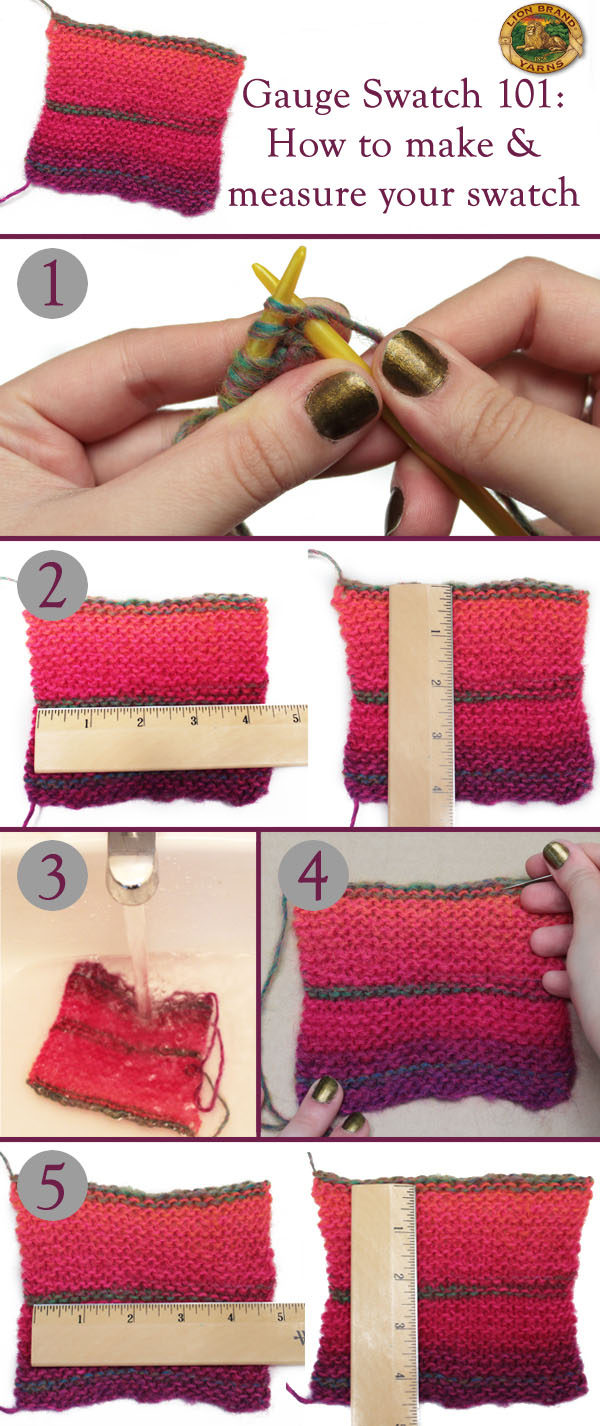In order to figure out how many stitches per inch you are crocheting, or the gauge of your crochet, you will need to make a gauge swatch. A gauge swatch is simply a small piece of crocheted fabric that is worked up in the same stitch pattern and with the same hook as your project. Once you have completed your gauge swatch, you will measure it to see how many stitches and rows fit within a certain measurement.
From there, you can determine if you need to adjust your tension or hook size in order to get the correct gauge for your project.
Crochet: Gauge Swatch
A gauge swatch is a small piece of crocheted fabric used to measure the tension of your crochet stitches. It is important to crochet a gauge swatch before starting any project because it will help you achieve the correct size and tension for your finished item. To crochet a gauge swatch, simply follow the pattern or stitch instructions for the number of stitches and rows indicated in the pattern.
How to Make a Gauge Swatch Crochet
If you’re a crocheter, you know that gauge is important. Gauge is the number of stitches and rows in a given space, usually 4 inches. It’s important to make a gauge swatch before starting any crochet project because it allows you to see how your particular tension works with the pattern and the yarn.
If your gauge is too loose or too tight, it can make your finished project come out the wrong size.
Making a gauge swatch is easy! First, find the stitch pattern for your project online or in a crochet book.
For this example, we’ll use single crochet (sc). Then, using the same yarn and hook that you’ll be using for your project, make a foundation chain that’s at least 10 stitches wide. Single crochet into each stitch of the foundation chain until you have a square that’s about 4 inches wide.
Count how many stitches and rows there are in 4 inches – this is your gauge!
Now compare your gauge to the one given in the pattern. If yours is looser than the pattern’s gauge, try going down a hook size; if it’s tighter than the pattern’s gauge, try going up a hook size.
Once you’ve found the right hook size, start on your actual project!

Credit: blog.lionbrand.com
What is a Gauge Swatch?
A gauge swatch is a small sample of your
How Do You Measure a Crochet Gauge Swatch?
A crochet gauge swatch is used to measure the tension, or gauge, of your crocheting. The finished size of your project can be affected by the tension of your crocheting, so it is important to make a gauge swatch before beginning a project in order to get an accurate measurement.
To make a gauge swatch, first choose the stitch pattern you will be using for your project.
Crochet a small sample square using that stitch pattern and then measure the number of stitches and rows per inch. Compare that measurement to the desired gauge listed in the pattern or instructions and adjust your tension accordingly. It is important to note that gauge can vary depending on the type of yarn and hook you are using, so always make a gauge swatch with the same materials you plan on using for your project.
What Does Gauge Mean in Crochet?
Gauge is a term used in crochet (and other crafts) that refers to the thickness of your yarn and the size of your hooks. It’s important to know your gauge because it will affect the size of your finished project.
There are two types of gauge: verbal and numerical.
Verbal gauge is a general description of how thick or thin your yarn is. For example, you might say that your yarn is “worsted weight” or “sport weight.” Numerical gauge is a more specific measurement, usually given in terms of wraps per inch (WPI).
This number tells you how many times you can wrap your yarn around a ruler or other object in one inch. The higher the number, the thicker the yarn.
You can use either type of gauge to determine whether or not your yarn is suitable for a particular pattern.
If the pattern doesn’t give a gauge, you can try to find one online or in another source such as a Crochet Gauge Chart. Once you have this information, you can compare it to your own gauge to see if they match up.
If they don’t match exactly, don’t worry!
You can usually adjust by using a different size hook or changing the tension with which you hold your yarn. Just remember that if you make any changes, be sure to test your gauge again so that you’ll know how those changes affect the overall size of your project.
What is a Swatch Crochet?
A swatch crochet is a small piece of crocheted fabric that is used to test out a new stitch or gauge the tension of your work. It is also a great way to use up small amounts of yarn. To make a swatch, simply chain the desired number of stitches and work in your chosen stitch until the piece measures 4 inches square.
Conclusion
A gauge swatch is a small piece of crocheted fabric used to measure the tension of your crochet stitches. It is typically worked in the same stitch pattern as the project you are making and in the same yarn. The number of stitches and rows in your gauge swatch will help you determine if your finished project will be the right size.

